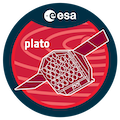Speaker
Description
With thousands of exoplanets now identified, the characterization of habitable planets and the potential identification of inhabited ones is a major challenge for the coming decades. To address this challenge, we developed an innovative approach to assess habitability and inhabitation by coupling for the first time the atmosphere and the interior modeling with the biological activity based on ecosystem modeling. We applied the approach to various situations where habitability and inhabitation are in question: the possibility of methanogenic activity at the Enceladus ocean floor [1], the impact of methanogenic activity on the composition of the early Earth and early Mars atmospheres and its influence on the long term climate[2,3]. During this talk, we will focus on the evolution of earth-like planets around G-type stars and strategies that can be elaborated to validate the concept of habitable planets so as to inform the design of future space missions[4,5].
[1] A. Affholder, F. Guyot, B. Sauterey, R. Ferrière, S. Mazevet, “Bayesian analysis of Enceladus’s plume data to assess
methanogenesis”, Nature Astronomy 5 (2021), p. 805-814.
[2] B. Sauterey, B. Charnay, A. Affholder, S. Mazevet, R.F errière,“Co-evolution of primitive methane-cycling ecosystems and early Earth’s atmosphere and climate”, Nature Communications 11 (2020).
[3] B. Sauterey, B. Charnay, A. Affholder, S. Mazevet, R. Ferrière,“Early Mars habitability and global cooling by H2-based
methanogens”, Nature Astronomy (2022).
[4] S. Mazevet, A. Affholder, B. Sauterey, A. Bixel, D. Apai and R. Ferriere « Prospects for the characterization of habitable planets », Comptes rendus de l’académie des sciences, physique, pp. 1-16. doi : 10.5802/crphys.154. (2023).
[5] A. Affholder, B. Sauterey, D. Apai, R. Ferrière, S. Mazevet « Interior convection regime determination of atmospheric CO2 abundance and habitability of terrestrial exoplanets » Under review

